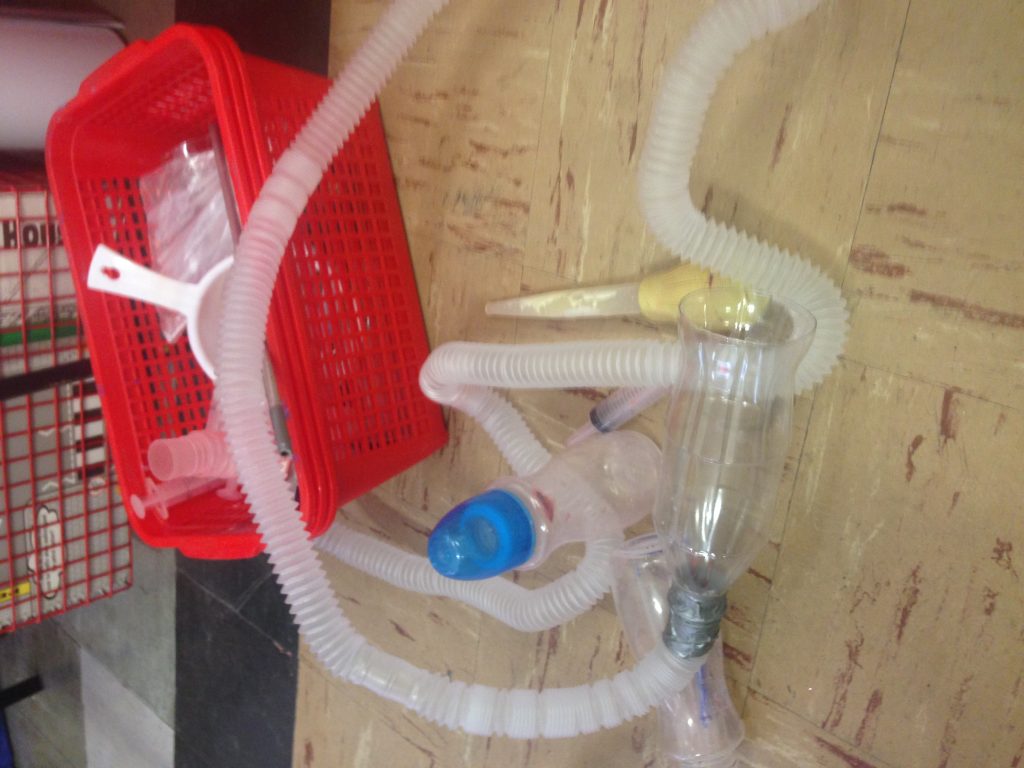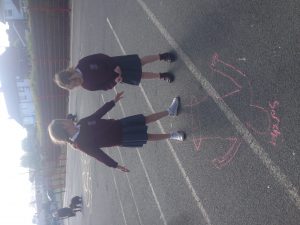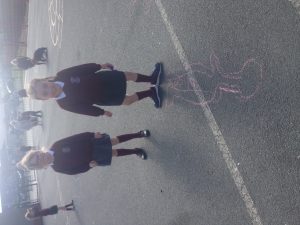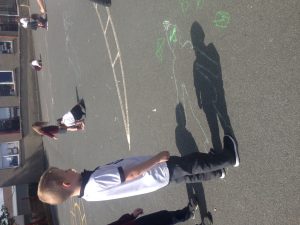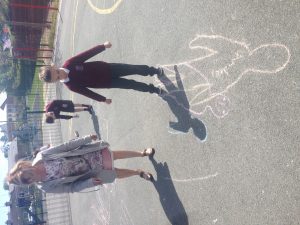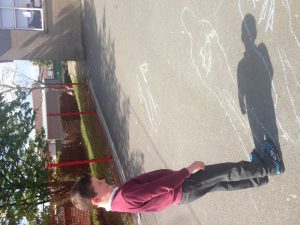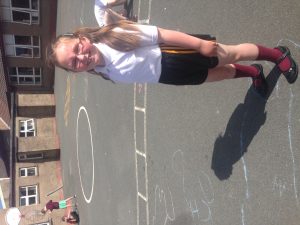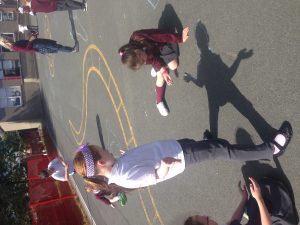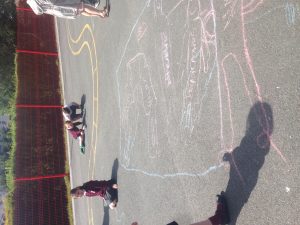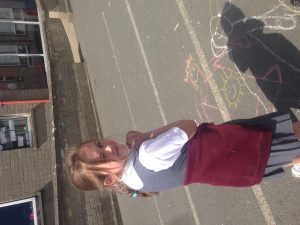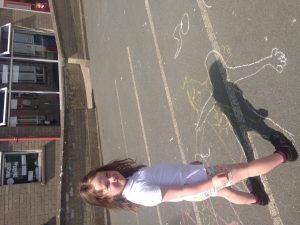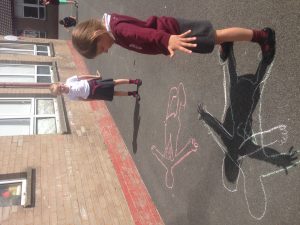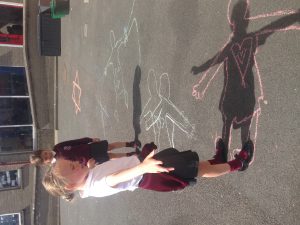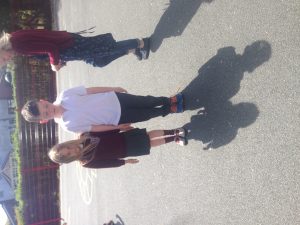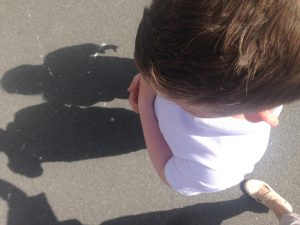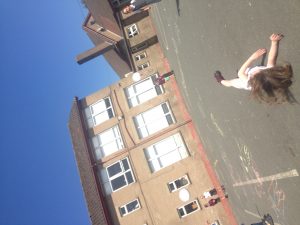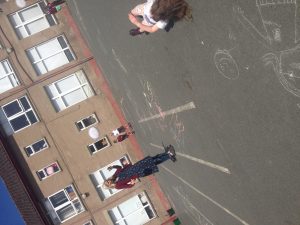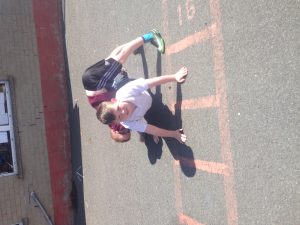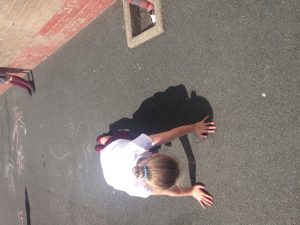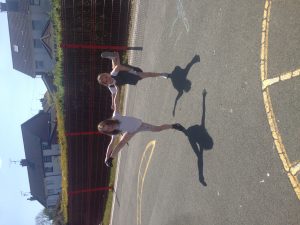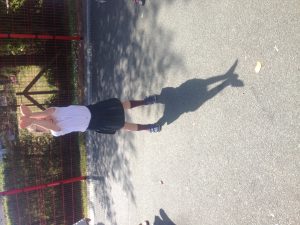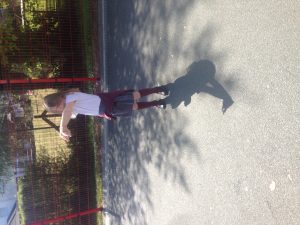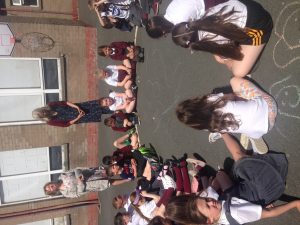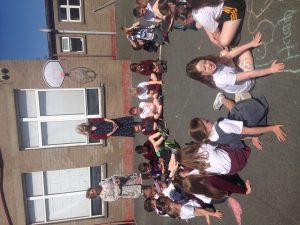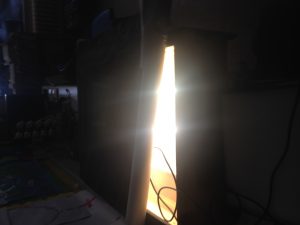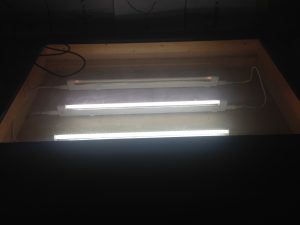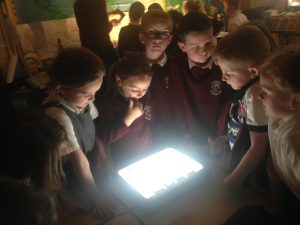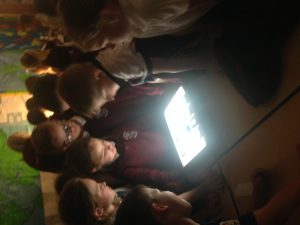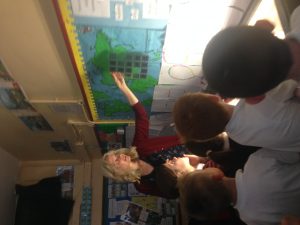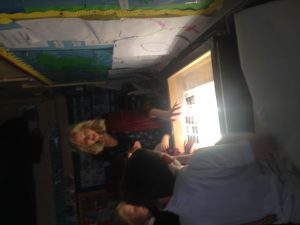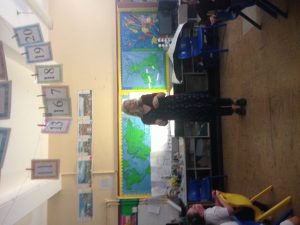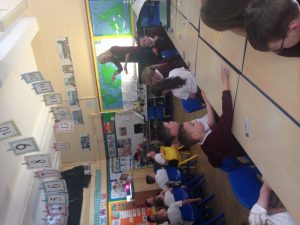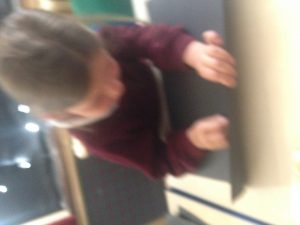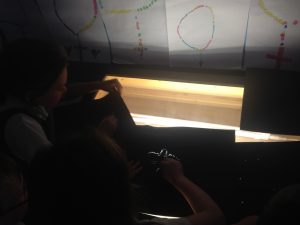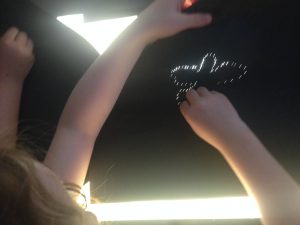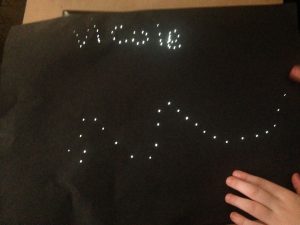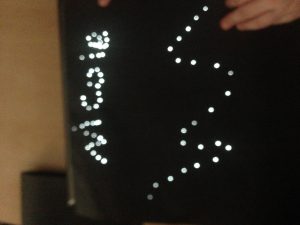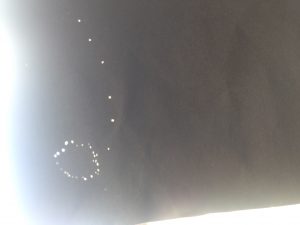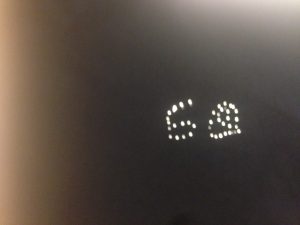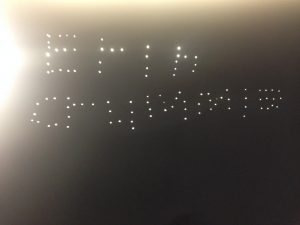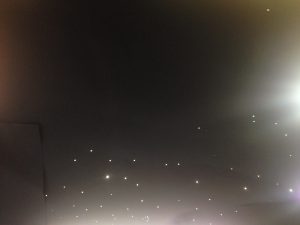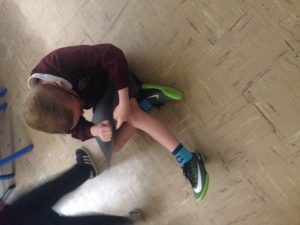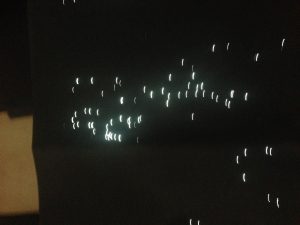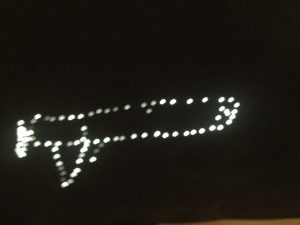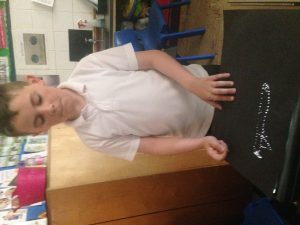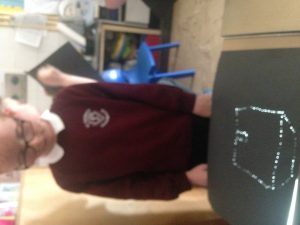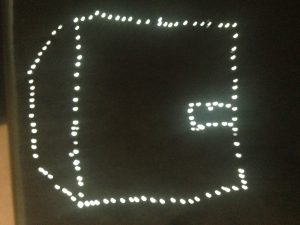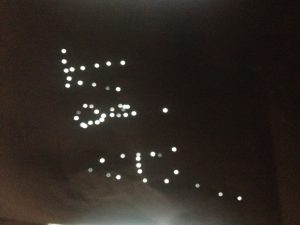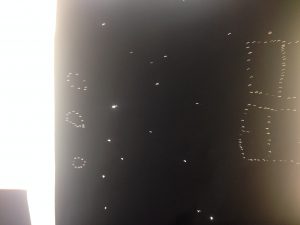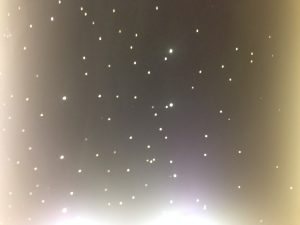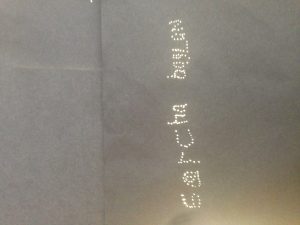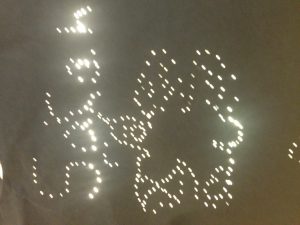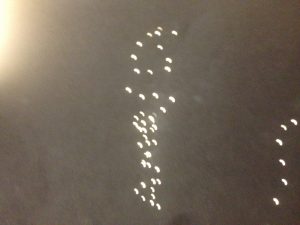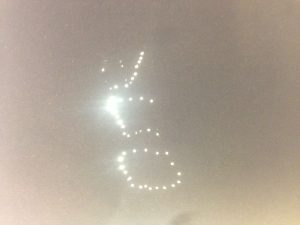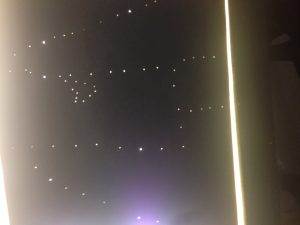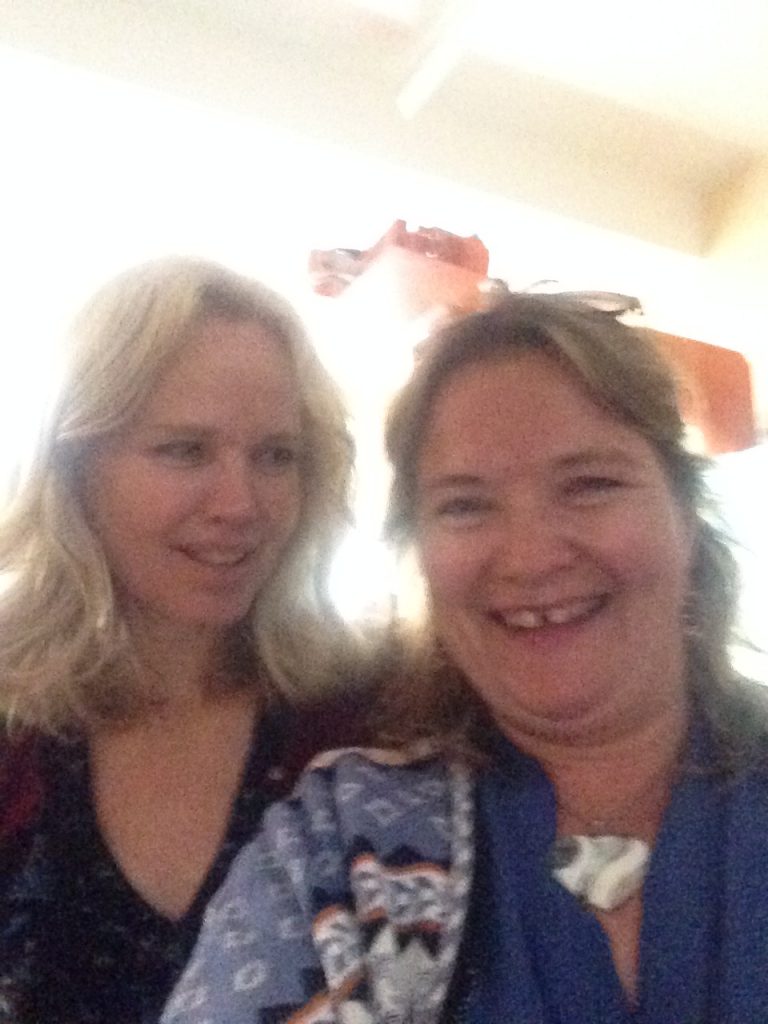Today we reached the end of a journey which in the words of Buzz Lightyear, has taken us ‘To infinity and beyond’. The children were looking forward to the session because it was a ‘real visit’, which means we get to welcome Sharon into our classroom and into our school. This is always more interesting to have her input at first hand. She takes such an intense and personal interest in all the children’s work.
We began with Circle Time where all the children had opportunities to reflect on their journey throughout the year, reminiscing on particular sessions which stood out for them for one reason or another.
A firm favourite was our ‘Jackson Pollock’ day when we attempted to recreate a Pollock masterpiece by using a wide variety of implements and utensils, including turkey basters, baby bottles and syringes, to drip paints onto a canvas without the painting tools actually coming in contact with the canvas. We used ‘Control’ sometimes less, sometimes more to create a cacophony of colour.
Another firm favourite was the day we explored gravity. We made ‘space goggles’ from egg boxes to protect our eyes and we set off on a journey into the unknown territory which before break time had looked like a normal classroom but was now covered in ropes and tape to create a laser minefield. The children were even tied together in teams to stop themselves from drifting away into a black hole!
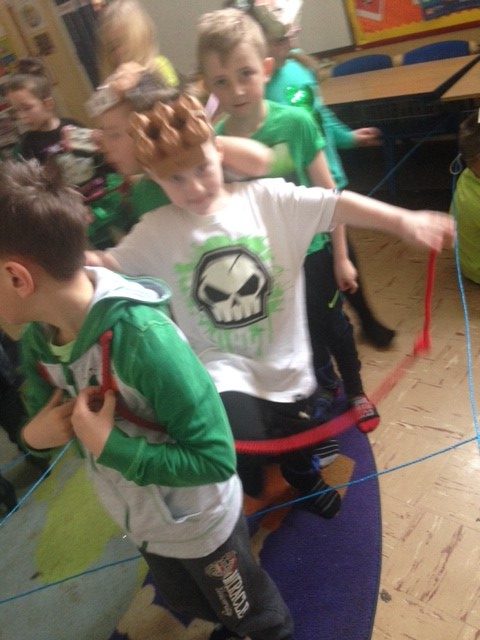
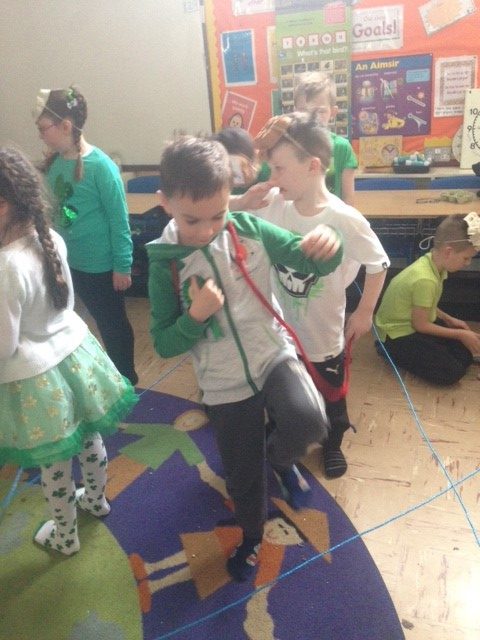




Discussions brought us back to the present as we linked together the various ideas that had made this journey possible. In preparation for Sharon’s visit we had watched a clip on Youtube of an interview by an Icelandic artist, Olafur Eliasson, whose creation ‘Little Sun’ had prompted our discussions on light and energy.
He had created or invented a solar powered light which he hoped could be used by people who had no access to electricity to improve their quality of life.
We were extremely lucky with the weather as we had lots of sunlight on Monday morning flooding into our classroom, which we needed for our activities. We were able to control the light coming into the classroom simply by using our window blinds. We needed to block out the light in order to use our interactive whiteboard. We quickly discovered that the sunlight was much more powerful than the bulb in the projector, and easily overpowered it flooding the whole classroom with light so that the images on the screen could not be seen.
One of our tasks for the day was to examine our shadow and draw it at different times in the day. We made 3 trips outside at 10 o’clock, 11 o’clock and 12 o’clock to draw our shadows. We worked in pairs. The children took turns to draw each other’s shadows; whilst this was great fun, the first time we went out the sun disappeared quite suddenly and our shadows vanished. Some of us admitted to being a little bit cross with our shadow for playing such a trick and it prompted us to read the Robert Louis Stevenson poem ‘My Shadow’, when we went back inside.
I have a little shadow that goes in and out with me,
And what can be the use of him is more than I can see.
He is very, very like me from the heels up to the head;
And I see him jump before me, when I jump into my bed.
The funniest thing about him is the way he likes to grow—
Not at all like proper children, which is always very slow;
For he sometimes shoots up taller like an india-rubber ball,
And he sometimes gets so little that there’s none of him at all.
He hasn’t got a notion of how children ought to play,
And can only make a fool of me in every sort of way.
He stays so close beside me, he’s a coward you can see;
I’d think shame to stick to nursie as that shadow sticks to me!
One morning, very early, before the sun was up,
I rose and found the shining dew on every buttercup;
But my lazy little shadow, like an arrant sleepy-head,
Had stayed at home behind me and was fast asleep in bed.
Luckily on the next two trips outside the sky was clear. We tried to stand in the same position each time and observe how our shadows fell across the ground. We were able to see clearly how our shadows got shorter as we got closer to midday. Our shadows also moved sideways as Niamh pointed out in a clockwise direction. We were able to check out images of sundials on the computer when we went back inside which led to a discussion about them actually being the first clocks. We found a picture of a terrific one that someone had made on the beach using stones and we thought it might be something that we could try ourselves on a sunny day.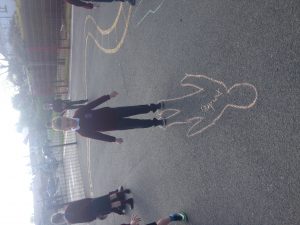
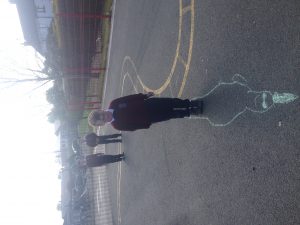
The children played some Shadow Games; in groups they raced across the yard only to watch their shadow beat them in a race. Then they raced back again to discover that this time their shadow was behind them. They also played a miming game called ‘CopyCat’ where they had to mimic the shape of their partner’s shadow by watching it. We had shadow animals, including elephants and butterflies. We also had some balancing shadow acts. Some people tried to make their own shadow disappear by hiding it on someone else’s shadow.
The children asked lots of questions and made lots of astute and interesting observations on their shadows. We looked for places in the playground where we couldn’t see our shadow, when we were standing in the shade. We finished off by sitting in the sunlight and thinking about all the things that the sunlight gives us and especially about how the sun makes us feel. We were all feeling very positive indeed.
Back inside we looked for shadows in our classroom and what shapes those shadows made. The children went on a shadow walk around the classroom looking for interesting shadow shapes.
After break time was over, Sharon produced two strange looking objects called ‘light boxes’. It was interesting to hear what the children thought that they might be used for. A common idea was that you could use them if your electricity went out until the children discovered that the box was also plugged in to the mains electricity. Sharon had brought along some photographic slides from her collection of her work and explained to the children how the light box let you see the picture on the slide clearly. The slide was more like an old negative than a picture but the children had never seen photographic film before as all pictures are now stored electronically on a microchip. We explained how before digital photography an image was saved onto the photographic film and it then had to be developed very carefully in a darkroom. Exposure to light would ruin any images stored. Having had a chance to examine the light boxes Sharon gave the children a sheet of black paper to obstruct the light and their task was to let the light shine through the paper by creating holes in the paper. Each child was given a pin along with very important safety instructions about how to use and not to use their pin.
The activity itself was very challenging and required a lot of concentration. The children got stuck in enthusiastically and had great fun watching their pictures develop. Some chose to work close to the light box so that they could see the shapes and patterns emerging as they made them. Others were confident enough to make their shape pattern and place it on the light box when they were finished. The results were varied and interesting. Some children wrote their names, some made constellation patterns, whilst others drew specific shapes.
This led to a very interesting discovery and discussion prompted by Eileen our classroom assistant, who suggested if we turned our page back to front we could run our fingers along the holes and feel the shape of the picture. In some ways it resembled the Braille alphabet which is used by the visually impaired. The children swapped pictures with each other and tried this out. Ciaran had made a pinhole picture of a house and we gave it to Sharon to read the bumps. She was able to guess correctly what Ciaran had made and the children were suitably impressed. We had a lot of fun making our pinhole pictures and the children were fascinated at how their patterns appeared illuminated when their black paper was placed on the light box. It was a very enjoyable session with lots of exploration and self-discovery which has been an integral part of the ‘Virtually There’ project.
